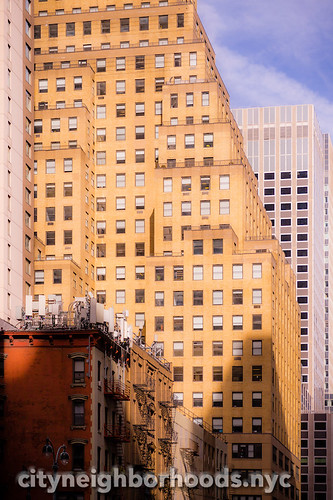Mobile users, you may need to rotate your device or click the + sign above to see the full list of neighborhoods.
Turtle Bay - Manhattan - NYC
Host to the United Nations and surrounding office towers, Turtle Bay is also home to classic buildings, upscale dining, and exclusive hotels.
Turtle Bay slideshow VIDEO
The neighborhood
Along the east side of Manhattan, from East 42nd Street to East 53rd Street, between 3rd Avenue and the East River is Turtle Bay. Here you'll find the United Nations complex, a host of embassies and consulates. And a few residences tucked in between.
Turtle Bay, located on the east side of Manhattan, is a vibrant neighborhood known for its mix of residential, commercial, and diplomatic spaces. The neighborhood got its name from the abundance of turtles that used to inhabit the bay along the East River. Over the years, Turtle Bay has transformed from a quiet residential area into a bustling neighborhood with a unique character. It is home to several major landmarks and attractions, including the United Nations Headquarters, which plays a significant role in shaping global politics. Additionally, the neighborhood boasts beautiful parks and green spaces, such as the Tudor City Greens and the Peter Detmold Park, providing residents and visitors with tranquil areas to relax and enjoy the outdoors. Turtle Bay also offers a variety of dining options, ranging from upscale restaurants to cozy cafes, making it a popular destination for food enthusiasts. With its rich history and dynamic atmosphere, Turtle Bay continues to be a sought-after neighborhood in Manhattan.
The neighborhood of Turtle Bay in Manhattan got its name from the abundance of turtles that were once found in the bay along the East River. During the 17th and 18th centuries, the area was known for its marshy shoreline, which provided an ideal habitat for various turtle species. The turtles were commonly seen sunbathing on the rocks and swimming in the bay, giving the area its distinctive name. Over time, the neighborhood underwent significant development and transformation, but the name "Turtle Bay" has remained, serving as a reminder of the area's natural history. Today, Turtle Bay is a bustling neighborhood known for its mix of residential and commercial spaces, diplomatic missions, and iconic landmarks like the United Nations Headquarters.
The history of the Turtle Bay neighborhood in Manhattan dates back to the early days of European settlement in the area. In the 17th century, the land was originally occupied by Native American tribes, and the area's natural bay and marshes provided a rich ecosystem. The name "Turtle Bay" is believed to have originated from the abundance of turtles that were once found in the bay. Over time, the land went through various changes of ownership and development. In the 19th century, industrialization and urbanization began to shape the neighborhood, with the construction of railroads and factories. The arrival of the United Nations Headquarters in the 1950s further transformed Turtle Bay, turning it into an important international diplomatic hub. Today, Turtle Bay is a vibrant and cosmopolitan neighborhood, offering a mix of residential buildings, commercial spaces, diplomatic missions, and cultural institutions. It has managed to preserve its unique character while embracing modernization and becoming a desirable place to live and work in New York City.
The neighborhood of Turtle Bay in Manhattan boasts several major landmarks and attractions. One prominent landmark is the United Nations Headquarters, located along the East River. This iconic complex serves as the international diplomatic center, where leaders from around the world gather to address global issues. Just a short distance away is the Tudor City Historic District, a charming enclave known for its distinctive Tudor-style architecture and beautifully landscaped gardens. Turtle Bay Gardens, a private and exclusive enclave, features stunning townhouses and hidden gardens, adding to the neighborhood's charm. Another notable attraction is the Dag Hammarskjold Plaza, a peaceful public park named after the former Secretary-General of the United Nations. It offers green spaces, sculptures, and a tranquil atmosphere amidst the bustling city. Additionally, Turtle Bay is home to a variety of upscale restaurants, elegant hotels, and lively bars, making it a popular destination for both locals and tourists alike.
Turtle Bay, Manhattan has been home to several notable individuals throughout its history. One such famous resident is Katharine Hepburn, the legendary actress who lived in the neighborhood for many years. Known for her iconic performances in films like "The Philadelphia Story" and "Guess Who's Coming to Dinner," Hepburn was admired for her talent, wit, and independent spirit. Another prominent figure associated with Turtle Bay is philanthropist Brooke Astor. Astor, known for her extensive charitable work and patronage of the arts, resided in the neighborhood's luxurious Beekman Place. Additionally, renowned architect and urban planner Robert Moses called Turtle Bay home. Moses was instrumental in shaping the modern landscape of New York City, overseeing the construction of many prominent landmarks, including Lincoln Center and the Triborough Bridge. These famous residents and their contributions have added to the rich cultural tapestry of Turtle Bay, making it a neighborhood with a notable legacy.
Highlight Gallery
Click here for the full Turtle Bay photo gallery:
Explore Every New York City Neighborhood:
All photography provided by Samuel Walters


